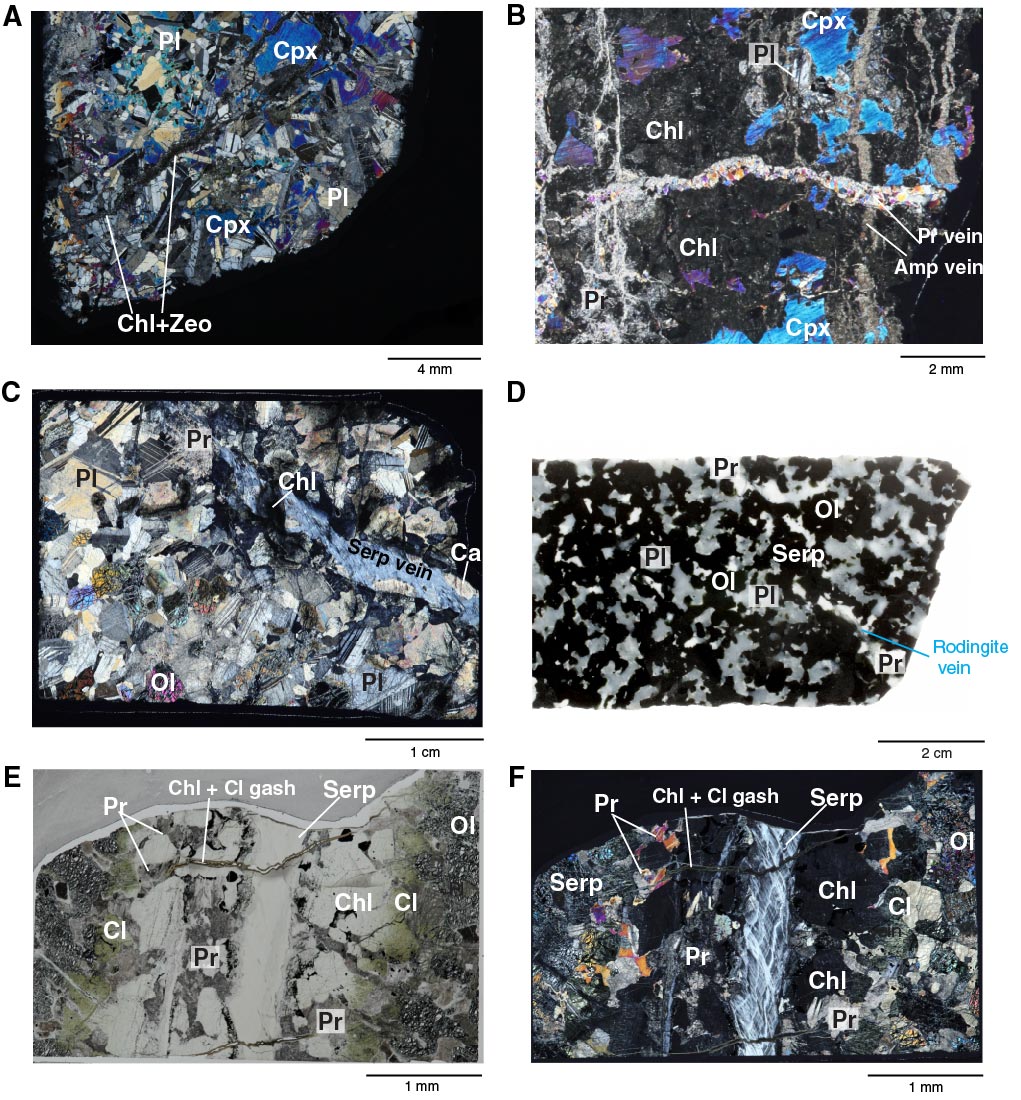
Figure F32. Typical vein morphology and mineralogy in olivine gabbro from Units II III (under crossed polars unless otherwise indicated). A. Chlorite (Chl) and zeolite (Zeo) vein in olivine (Ol) gabbro cutting a clinopyroxene (Cpx) oikocryst with no vein halo (Thin Section 125; Sample 345-U1415P-13R-1, 39–42 cm [Piece 5]). B. Amphibole veins crosscut by a prehnite (Pr) vein in a cataclastic sample (Thin Section 121; Sample 345-U1415P-10R-1, 121–134 cm [Piece 13]). C. Large serpentine (Se) and chlorite vein with carbonate (Car) and prehnite patches and a chloritized vein halo in a troctolitic sample from Unit III (Thin Section 129; Sample 345-U1415P-16R-1, 47–49 cm [Piece 6]). D. Close-up core image of troctolite cut by a prehnite vein showing the microrodingite reaction in which olivine is altered to serpentine and plagioclase is altered to prehnite (Sample 345-U1415P-20R-2, 0–8 cm [Piece 1]). E. Large fibrous serpentine ladder vein crosscut by gashes filled with chlorite and clay (Cl) minerals (Sample 345-U1415P-20R-1, 3–6 cm [Piece 1]; plane-polarized light). F. Serpentine vein in E showing crosscutting clay mineral veins. Abundant magnetite occurs in the vein selvage.

Previous | Close | Next | Top of page